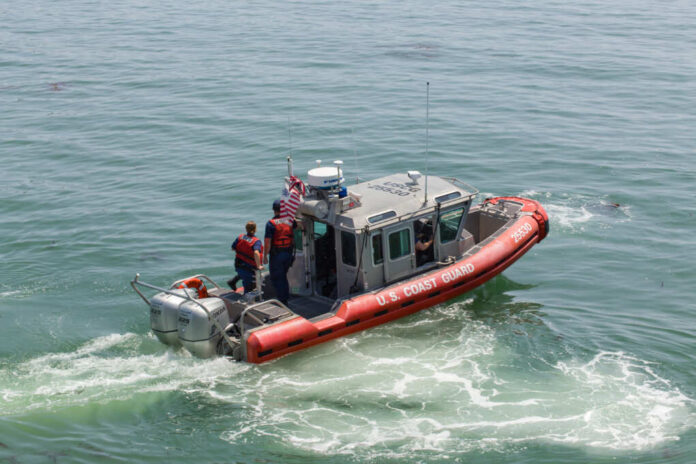
As illegal immigration shifts from land to sea, the U.S. Coast Guard has tripled its maritime patrols in response to a surge in human smuggling operations along the West Coast—driven in part by California’s sanctuary policies.
AT A GLANCE
- The Coast Guard has tripled its personnel at the southern maritime border to curb smuggling
- 260 smuggling vessels have already been intercepted this fiscal year
- California remains a top landing point for smugglers, aided by sanctuary policies
- Dangerous crossings have included Chinese, Ecuadorian, Colombian, and Dominican nationals
- U.S. officials warn migrants: “Do not take to the sea—you could lose your life”
Coast Guard Battles Migrant Surge at Sea
With land border crossings under increased scrutiny, human smugglers have turned to the Pacific Ocean—and the U.S. Coast Guard is racing to catch up. In recent months, the agency has tripled its maritime border personnel and deployed a suite of aerial and naval assets to stem the tide of illegal maritime migration, which has become a growing threat to both national security and human safety.
According to Fox 5 San Diego, the Coast Guard has already intercepted 260 vessels since the fiscal year began—nearly half of last year’s total in just a few months. “We’ve essentially tripled the amount of Coast Guard assets on the southern border,” said Officer Peter Nelson, who leads Coast Guard Station San Diego.
These vessels are often overcrowded and unfit for open water, placing desperate migrants in extreme danger. One rescue mission near San Diego recovered 17 Mexican nationals stranded at sea, highlighting the perils of such crossings.
California’s Coastal Loophole
Despite these efforts, smugglers continue targeting California’s extensive coastline. Officials say the state’s sanctuary laws are acting as a magnet for maritime migration by limiting local cooperation with federal immigration enforcement. Unlike states like Florida—where aggressive interdiction efforts have curbed boat landings—California’s policies have left coastal communities more vulnerable.
“Do not take to the sea. You could lose your life,” the Coast Guard has warned. But for many migrants, the promise of sanctuary and leniency outweighs the risks, emboldening smugglers who charge thousands of dollars per crossing, regardless of the vessel’s safety or legality.
Watch footage of the Coast Guard’s high-seas crackdown.
High-Tech Smuggling Meets High-Stakes Enforcement
To meet the challenge, the Coast Guard has deployed helicopters, fixed-wing aircraft, and high-speed interceptor boats. The joint operations, which also involve Customs and Border Protection and even the U.S. Navy, have ramped up significantly in the past two months. “The one thing that has changed is the amount of boats and aircraft in the area,” Nelson explained, noting a noticeable rise in patrol frequency and effectiveness.
One operation off Florida’s Elliott Key recently interdicted two vessels carrying 21 Chinese nationals, alongside individuals from Colombia, Ecuador, and the Dominican Republic, according to CBP reports. These aren’t isolated events—they’re part of a broader trend where transnational smuggling networks increasingly rely on maritime routes to evade detection.
Preventable Tragedies, Predictable Patterns
At its core, the crisis is not just a matter of border policy—it’s about human lives. Migrants placed aboard these vessels face not only legal consequences, but also life-threatening conditions. Boats are routinely overloaded, lack life jackets or navigation systems, and often set out under cover of darkness.
Officials emphasize the human cost: “We remain steadfast in our commitment to saving lives and discouraging anyone from taking to the sea in ways that are unsafe and illegal,” the Coast Guard said in a statement to the New York Post.
Until sanctuary policies are reconsidered and deterrence is prioritized, experts warn, the sea will remain a deadly shortcut into America—and the Coast Guard will remain the last line of defense against disaster.




















